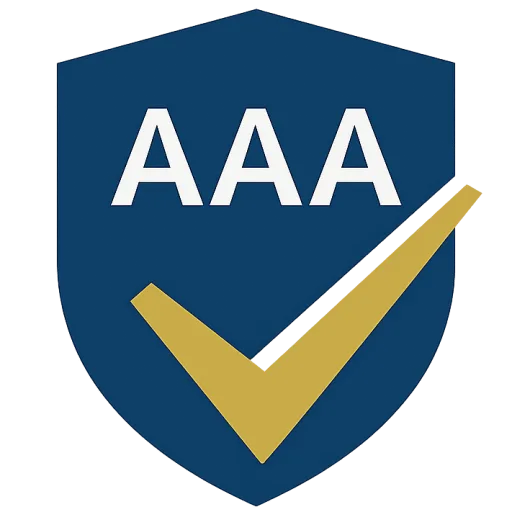Do You Know What’s in Your HazCom Program?
Do you even have one?
If OSHA showed up tomorrow, could you prove your employees know how to handle every chemical in your facility? These aren’t hypotheticals. In 2024, Hazard Communication (HazCom) violations were the second most common OSHA citation, with 2,888 violations totaling an estimated $46.6 million in fines.

Let’s break it down—what HazCom actually is, why it matters for pesticide manufacturers, and how to stay compliant.
What Is HazCom, and Why Does It Matter?
HazCom is a standard set by OSHA (29 CFR 1910.1200) that ensures employees know the risks of the chemicals they work with, and how to protect themselves.
It requires pesticide manufacturers to:
- Identify hazardous chemicals in the workplace
- Label containers properly
- Maintain up-to-date Safety Data Sheets (SDSs)
- Train employees on chemical hazards
- Keep a written plan explaining how all of this is managed
If your facility uses or handles chemical substances—including EPA-registered products, 25(b) ingredients, or cleaning blends—HazCom applies to you.
What Is a Written Hazard Communication Program?
A written HazCom program is your facility’s documented plan for how you handle hazardous chemicals. It’s not just a best practice—it’s an OSHA requirement.

Your written plan should explain:
- What chemicals are present in your operation
- Where and how SDSs are stored
- Your labeling system for chemical containers
- How and when you train employees
- Who is responsible for maintaining compliance
If you don’t yet have a documented program, AAA Compliance Partners can help you build one from scratch.
Not sure where your HazCom compliance stands?
Contact us today to Book a free 30-minute consultation.
We have a limited audit capacity so call or email now!
The 5 Most Common HazCom Violations in Pesticide Manufacturing (And How They Happen)

1. No Written Hazard Communication Program
Many pesticide manufacturers assume they’re compliant because they have SDSs on file. But without a written plan, they’re missing the foundation.
Why it’s missed:
Smaller operations may not realize a plan is required. Others rely on outdated templates that don’t reflect current operations.
Fix it:
Create or update your HazCom plan so it’s specific to your facility, product types, and chemical processes.
2. Failure to Maintain and Provide SDSs
An SDS (Safety Data Sheet) explains a chemical’s hazards and how to use it safely. OSHA requires pesticide manufacturers to maintain a complete SDS library and make it accessible to all employees.
Common issues:
- Missing SDSs for raw materials or in-process blends
- SDSs stored in inaccessible digital folders
- SDSs that don’t match actual inventory
Fix it:
Conduct regular SDS audits and use a centralized, accessible format. We can help with custom SDS library reviews.
3. Improper Labeling of Hazardous Chemicals
EPA labels are not the same as OSHA workplace labels. Every hazardous chemical container, including temporary spray bottles, must be properly labeled for worker safety.
OSHA labels must include:
- Product identifier
- Signal word (“Danger” or “Warning”)
- Hazard statements
- Precautionary statements
- Pictograms
- Supplier information
Fix it:
Review your secondary container processes. Ensure that labels used in production, blending, or cleaning areas meet HazCom standards.
4. Inadequate HazCom Training
OSHA requires training when employees are first assigned to hazardous chemicals—and whenever a new hazard is introduced.
Training must cover:
- Chemical hazards present
- How to use SDSs and labels
- Required PPE
- Emergency procedures
Fix it:
Offer in-person or virtual HazCom training for your staff. Document everything and include temporary or seasonal workers.
5. Failure to Update Hazard Information
When suppliers update SDSs or formulations change, your HazCom materials must reflect those updates.
Fix it:
Assign a responsible party and implement a regular review cycle. Keep SDSs, labels, and training aligned with the most current hazard data.
Why Pesticide Manufacturers Are Especially at Risk
Most facilities focus heavily on EPA registration and PRIA deadlines, but OSHA cares about what happens on site with your employees and containers.
We see frequent HazCom issues in:
- Antimicrobial and disinfectant manufacturing
- 25b product facilities
- Contract formulation and blending operations
HazCom is required whether you’re producing, repackaging, or simply storing chemicals.
HazCom Compliance Self-Check
Ask yourself:
- Do we have a written HazCom plan?
- Are our SDSs complete, current, and accessible?
- Are all containers labeled correctly—including temporary ones?
- Has every employee been trained on HazCom in the past year?
- Do we track SDS and hazard updates when formulations change?
If you’re unsure about any of the above, it’s time to take action.
How We Can Help

AAA Compliance Partners offers pesticide manufacturers:
- Free 30-minute HazCom consultations
- Custom SDS library reviews and corrections
- Virtual or on-site HazCom training
Let’s protect your people and your business—before OSHA gets involved.
Not sure where your HazCom compliance stands?
Contact us today to Book a free 30-minute consultation.
We have a limited audit capacity so call or email now!
Frequently Asked Questions (FAQ)
Do all pesticide manufacturers need a HazCom program?
Yes. If your facility uses or stores hazardous chemicals—whether EPA-registered or exempt—you are required to have a written Hazard Communication program.
How often should SDSs be reviewed?
SDSs should be reviewed at least annually and updated any time new hazard information becomes available.
What’s the difference between an OSHA label and an EPA product label?
EPA labels cover environmental compliance and safe product use. OSHA labels are focused on workplace safety and worker exposure. Most pesticide manufacturers need both.
When is HazCom training required?
Training is required when employees first start handling hazardous chemicals, and any time a new hazard or product is introduced into the workplace.
